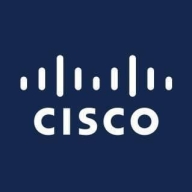

Fortinet FortiGate Cloud and Cisco Security Cloud Control compete in the network security solutions category. Fortinet seems to have the upper hand in terms of cost-effectiveness and ease of use, whereas Cisco offers a more comprehensive set of features and better integration capabilities.
Features: Fortinet FortiGate Cloud provides streamlined management capabilities, reliable SD-WAN functionality, and effective threat intelligence integration. Cisco Security Cloud Control excels in centralized device control, automation of security measures, and comprehensive policy management.
Room for Improvement: Fortinet could enhance integration with non-Fortinet products and provide extended log storage options. Cisco might improve on ease of use for non-expert users, offer more competitive pricing, and enhance customer support responsiveness.
Ease of Deployment and Customer Service: Fortinet FortiGate Cloud is noted for its straightforward deployment and user-friendly interface, with effective customer support. Cisco Security Cloud Control is robust in deployment capabilities but may have a steeper learning curve, with reliable yet potentially slower customer service responses.
Pricing and ROI: Fortinet FortiGate Cloud offers competitive pricing, appealing to budget-conscious buyers, and provides good ROI with cost savings and efficient management. Cisco's extensive feature set justifies its higher pricing, offering a satisfactory ROI for businesses needing comprehensive solutions and advanced security features.
| Product | Market Share (%) |
|---|---|
| Fortinet FortiGate Cloud | 4.5% |
| Cisco Security Cloud Control | 2.2% |
| Other | 93.3% |

| Company Size | Count |
|---|---|
| Small Business | 6 |
| Midsize Enterprise | 3 |
| Large Enterprise | 6 |
| Company Size | Count |
|---|---|
| Small Business | 50 |
| Midsize Enterprise | 10 |
| Large Enterprise | 21 |
Cisco Security Cloud Control offers centralized management, real-time visibility, and AI-driven automation for on-premises and cloud environments, simplifying scalability and deployment.
With a unified approach, Cisco Security Cloud Control enhances security posture by providing cross-platform insights across Cisco's ecosystem. It accelerates threat detection and optimizes policy enforcement through a blend of AI automation and natural language querying capabilities. The intuitive platform serves multiple devices, enabling comprehensive management of Secure Firewall, Secure Access, and other services with guidance from the Cisco AI Assistant. It also includes an AI Operations feature that identifies critical issues and provides real-time insights, enhancing response times while a policy analyzer improves security hygiene by detecting and closing security gaps. Its automation minimizes manual tasks, secures cloud-stored configurations, and supports two-factor authentication. However, it could benefit from improvements in navigation clarity, bulk change handling, and expanded third-party integrations.
What are the key features of Cisco Security Cloud Control?Industries implementing Cisco Security Cloud Control leverage its capabilities for tasks ranging from firewall management to intrusion prevention. Enterprises use it to streamline policy management, automate configurations, and integrate Cisco devices with cloud strategies, benefiting from simplified security orchestration and network segmentation.
FortiCloud can help with your wireless and security challenges in a number of ways. Our solution addresses common IT difficulties including time-consuming provisioning, high investment costs, complex management, vulnerability to advanced threats, and the need to easily scale with growth.
We monitor all Firewall Security Management reviews to prevent fraudulent reviews and keep review quality high. We do not post reviews by company employees or direct competitors. We validate each review for authenticity via cross-reference with LinkedIn, and personal follow-up with the reviewer when necessary.